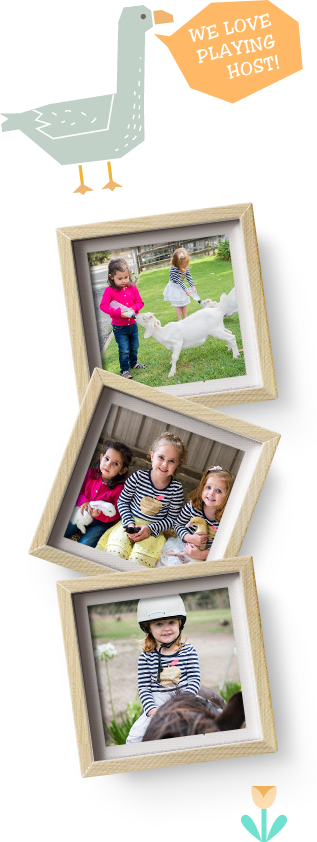Some animal diseases can be transmitted to humans. There is a small risk of children acquiring infections such as Cryptosporidium, Campylobacter and Salmonella. These organisms can be found in some farm animals and may be contracted by hand to mouth contact. Illness in children resulting from contact with animals at shows has recently been topical and because we don't want this to happen after your visit here, please take a moment to read through the following guidelines to ensure your health and safety.
General health and safety rules
- Wash hands, using soap and running water before eating after handling animals.
- After handling animals it is recommended to use disinfectant gels in addition to washing your hands.
- Children should not drink from animal water troughs.
- Do not allow children to kiss the animals or put them too close to their face.
- Do not allow children less than 3 years of age to touch the animals without direct adult supervision.
- Children should not put fingers in their mouths.
- Children should not eat lollies or other snacks during contact with the animals.
- Eat only in the designated picnic areas.
- Do not allow children to climb on any walls, fences or gates or in the gardens.
- Children should be seated and hold small animals in their lap as animals may scratch as they attempt to jump from children’s hands.
- Cover all cuts, bites, wounds & grazes with an antiseptic cream and a waterproof dressing to avoid infection.
- Children's dummies that have fallen to the ground should not be put back into children’s mouths.
- Wear suitable clothing and footwear.
- Ensure all responsible adults are aware of the rules.
- Smoking is only permitted in the car park.
Pregnant women
Ewes are sometimes infected with an organism called Chlamydia Psittaci, which can cause miscarriage in women. The risk is very small, but it is important to be aware of the potential problem. To avoid this risk, pregnant women should avoid direct contact with newly born lambs, kids or the birth products of sheep or goats.
Minimum adult to child ratio
The ratio of children to (Supervisors/teachers/assistants/parents) for excursions should be;
- 1:1 - children under 1 year old
- 1:2 - children between 1 and 2 years old
- 1:3 - children between 2 and 3 years old
- 1:4 - children between 3 and 5 years old
- 1:8 - children between 5 and 8 years old
If supervision levels are less than this there should be no direct contact with animals.




